| item(s), Total: $0.00 View Cart |
| Shopping cart is empty. |
Howdy, Green Lifers!
We know from what happened here a few months back that spending time in the garden becomes an important way to de-stress. Many people are looking at new projects around their home and garden;so we've got an article below on vertical gardening, becoming a bit of a trend with builders & landscape architects. If you're looking for a challenge, it might be for you! Gardening (in particular growing your own fruit, vegies & herbs) has so many other benefits to our overall physical AND mental health. If you're a new gardener since Covid-19 we welcome you to the Green Life tribe!
Hopefully we'll providing you with inspiration to get out and enjoy your garden this month & we look forward to seeing you soon. Cheers Linda (& the Team @ The Green Life Soil Co)
|
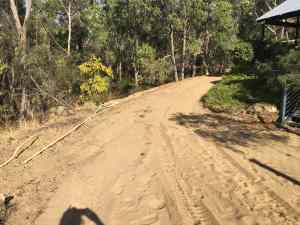 |
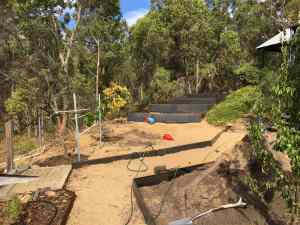 |
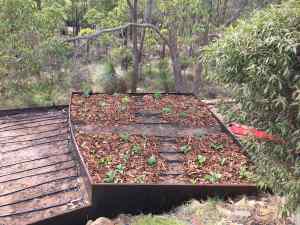 |
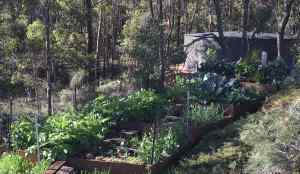 |
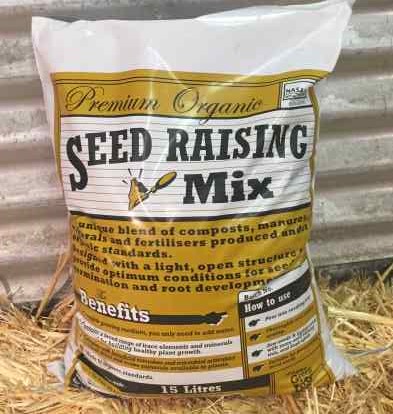 It's the time of year to get your Spring seeds started! So to give you a helping hand, we're offering you a FREE bag of our Certified Organic Seed Raising Mix with any purchase over $50 this month. So come on in, grab your seeds & other gardening goodies - and get growing!
It's the time of year to get your Spring seeds started! So to give you a helping hand, we're offering you a FREE bag of our Certified Organic Seed Raising Mix with any purchase over $50 this month. So come on in, grab your seeds & other gardening goodies - and get growing! The fine print: In store shoppers or when placing an order over the phone - you must ask for our VIP special. If shopping online, use the 'delivery notes' section of the order to ask for your VIP free Seed Raising Mix August VIP special.
Retailer Stockist Update & new Great Southern Outlet
There's never been a better time to support local small businesses - Please support the independent retailers who support us. They've got great local knowledge and are happy to help. We'd love to welcome Blossoms Nursery in Denmark to the Green Life family! So if you live in the Great Southern you too can find some of GLSC's products close to home. Blossoms has a fabulous range of plants (including some unusual succulents) and lovely giftware too ~ you're sure to find a home/garden souvenir or two. Get your #wanderoutyonder on and take a trip to the beautiful Denmark region and check out a great nursery! (What other excuse do you need?) Go say 'hi' to Kaye and Don (Blossoms' lovely owners) and support another local business.
We'd love to welcome Blossoms Nursery in Denmark to the Green Life family! So if you live in the Great Southern you too can find some of GLSC's products close to home. Blossoms has a fabulous range of plants (including some unusual succulents) and lovely giftware too ~ you're sure to find a home/garden souvenir or two. Get your #wanderoutyonder on and take a trip to the beautiful Denmark region and check out a great nursery! (What other excuse do you need?) Go say 'hi' to Kaye and Don (Blossoms' lovely owners) and support another local business.Beaufort Garden World - Inglewood 9271 0585
Evergreen Studio - North Beach 0419 091 095
Garden Elegance - Subiaco 9381 2197
Guildford Town Garden Centre - Guildford 9279 8645
Nibali Stockfeed - Hamilton Hill 9433 2211
Stanbee Stockfeeds - Barragup 9581 2390
Thrive Sustainability - Lower Chittering 0408 157 301
Waldecks Bentley - Bentley 9458 5944
Waldecks Melville - Melville 9330 6970
Waldecks Kingsley - 9309 5088
Waldecks Stirling - 9254 6730
Zanthorrea Nursery - Maida Vale 9454 6260
Australind Landscaping Supplies 9796 1720
Blossoms Nursery (Denmark) 9848 2014
Busselton - U scape Garden Centre 9751 3995
Leschenault & Bunbury Markets - Fancy Plants Nursery 0428 844 597
Margaret River - Nutrient Ag Solutions (formerly Landmark) 9758 7677
All stockists carry different items (so give them a call and check!). If there's an item of ours they don't usually carry, in most cases they'd be very happy to add it to their next order for you.
Know of anywhere in your area that you'd like to stock our products? Let us know (as well as letting THEM know!) and we'd be happy to approach them.
Remember to keep an eye on our Facebook and Instagram pages for news & updates regularly.
THANK YOU for being part of the Green Life family - stay safe, stay healthy & keep gardening!

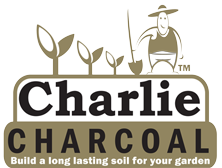

 Welcome to August. In the Nyoongar calendar, we're heading into Djilba - which is when the seasons begin to change (towards what we'd call 'Spring'). It is the time of conception; many native animals are breeding now so their young are born into a season of plentiful food. In our local bush, Acacias are flowering, and some of the other wildflowers like Hibbertia and Hovea are beginning to flower, too! Every week at this time of year, the bush comes alive with something else flowering.
Welcome to August. In the Nyoongar calendar, we're heading into Djilba - which is when the seasons begin to change (towards what we'd call 'Spring'). It is the time of conception; many native animals are breeding now so their young are born into a season of plentiful food. In our local bush, Acacias are flowering, and some of the other wildflowers like Hibbertia and Hovea are beginning to flower, too! Every week at this time of year, the bush comes alive with something else flowering. With Spring just around the corner, it's time to get busy in the garden. Days are getting longer, which is the trigger for many of our plants to emerge from winter dormancy and put on new growth. While we had a good start to winter rains in May & June, July (at least while I'm writing this) has been warmer and dryer than the average, and many of our plants are a little confused. Some things haven't gone dormant that normally would have by now, and lots of people are telling me their roses are still flowering! If that's you, and you're not sure what to do - we've got some advice from local gardening expert Deryn Thorpe. Check it out below.
With Spring just around the corner, it's time to get busy in the garden. Days are getting longer, which is the trigger for many of our plants to emerge from winter dormancy and put on new growth. While we had a good start to winter rains in May & June, July (at least while I'm writing this) has been warmer and dryer than the average, and many of our plants are a little confused. Some things haven't gone dormant that normally would have by now, and lots of people are telling me their roses are still flowering! If that's you, and you're not sure what to do - we've got some advice from local gardening expert Deryn Thorpe. Check it out below. In this newsletter:
In this newsletter: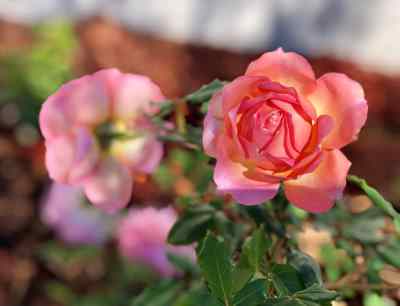 Rose pruning. If you haven't already done so, it's time to give Roses and other perennial flowering plants their winter prune to encourage a flush of spring blossoms. (See our feature article below from Perth gardening pro Deryn Thorpe regarding rose pruning.)
Rose pruning. If you haven't already done so, it's time to give Roses and other perennial flowering plants their winter prune to encourage a flush of spring blossoms. (See our feature article below from Perth gardening pro Deryn Thorpe regarding rose pruning.)  Check on your compost. Piles that you've created with winter weeds & autumn leaves should be cooking nicely. Check on the nitrogen to carbon ratio - if the piles are too wet, add more shredded dry material. If they're too dry, add a bit of water. A handful or two of blood & bone and a good turn over of the pile should get things cooking again. Start a new pile for new material and monitor your existing pile every week - it should cook nicely for you to use with in 1-2 months for your Spring crops.
Check on your compost. Piles that you've created with winter weeds & autumn leaves should be cooking nicely. Check on the nitrogen to carbon ratio - if the piles are too wet, add more shredded dry material. If they're too dry, add a bit of water. A handful or two of blood & bone and a good turn over of the pile should get things cooking again. Start a new pile for new material and monitor your existing pile every week - it should cook nicely for you to use with in 1-2 months for your Spring crops.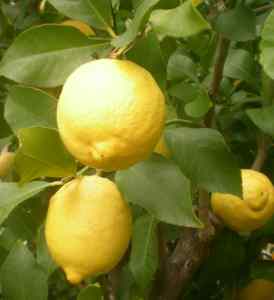 Get ready to feed up your fruit trees. It is possibly a little early at the start of the month, but heading to the end of August/early September (and depending on the weather) it's time to feed up your Citrus trees, and your deciduous trees that will be emerging from Winter dormancy. We recommend a good slow release fertiliser or soil improver that contains rock dust (or use rock dust separately) - the trace elements will lead to healthier plants and better tasting fruit. Beware of too much nitrogen alone for your citrus trees - lots of sappy green growth is perfect for citrus gall wasps. Speaking of this pest; inspect your trees and make sure any galls have been removed; in late Winter the young adults will be emerging - if you see little exit holes in the galls you're already too late. The adults will be laying eggs in your citrus trees sometime late August/September. Sustainable Gardening Australia recommends using yellow sticky traps in your citrus to help; but don't leave them in the trees too much later in the Spring to avoid catching other beneficial insects. Also be aware small birds can be caught in these traps - so do use the ones with protective cages or do some googling to fashion your own.
Get ready to feed up your fruit trees. It is possibly a little early at the start of the month, but heading to the end of August/early September (and depending on the weather) it's time to feed up your Citrus trees, and your deciduous trees that will be emerging from Winter dormancy. We recommend a good slow release fertiliser or soil improver that contains rock dust (or use rock dust separately) - the trace elements will lead to healthier plants and better tasting fruit. Beware of too much nitrogen alone for your citrus trees - lots of sappy green growth is perfect for citrus gall wasps. Speaking of this pest; inspect your trees and make sure any galls have been removed; in late Winter the young adults will be emerging - if you see little exit holes in the galls you're already too late. The adults will be laying eggs in your citrus trees sometime late August/September. Sustainable Gardening Australia recommends using yellow sticky traps in your citrus to help; but don't leave them in the trees too much later in the Spring to avoid catching other beneficial insects. Also be aware small birds can be caught in these traps - so do use the ones with protective cages or do some googling to fashion your own.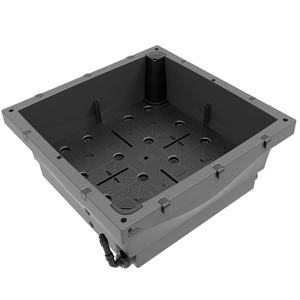 Plan. If you're going to build new garden beds, or relocate existing ones, now's the time to plan and build. If you're wanting to go no-dig and use up some decaying plant material & weeds, it's a good time to start so things can begin decomposing. Solarise soil with plastic to cook weeds before you mulch any new paths, etc. See our article on organic
Plan. If you're going to build new garden beds, or relocate existing ones, now's the time to plan and build. If you're wanting to go no-dig and use up some decaying plant material & weeds, it's a good time to start so things can begin decomposing. Solarise soil with plastic to cook weeds before you mulch any new paths, etc. See our article on organic  Plant trees & shrubs. Bare rooted trees are now available & it's the best time to plant before they emerge from dormancy. Consider planting some flowering native plants to bring in birds and pollinators. Visit a good nursery on a lovely, sunny day and get some advice about what variety/ies will suit your garden, situation & site, and soil type.
Plant trees & shrubs. Bare rooted trees are now available & it's the best time to plant before they emerge from dormancy. Consider planting some flowering native plants to bring in birds and pollinators. Visit a good nursery on a lovely, sunny day and get some advice about what variety/ies will suit your garden, situation & site, and soil type.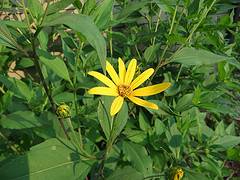 There's still time to get some crops in the ground of potatoes, onions, peas, broad beans. And there's
There's still time to get some crops in the ground of potatoes, onions, peas, broad beans. And there's 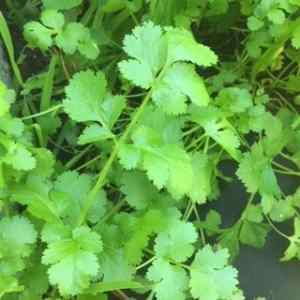 Vegies to consider growing now include: Artichokes (Globe & Jerusalem), Asian Greens, Asparagus, Beans, Broad Beans, Beetroot, Cabbage, Carrots, Celery, Choko, English Spinach, Kale, Kohl Rabi, Leek, Lettuce, Onion, Parsnip, Peas, Potato, Radish, Silverbeet, Snow Peas, Spring Onion, Turnip.
Vegies to consider growing now include: Artichokes (Globe & Jerusalem), Asian Greens, Asparagus, Beans, Broad Beans, Beetroot, Cabbage, Carrots, Celery, Choko, English Spinach, Kale, Kohl Rabi, Leek, Lettuce, Onion, Parsnip, Peas, Potato, Radish, Silverbeet, Snow Peas, Spring Onion, Turnip. ... That is the question we posed to horticulturalist and journalist Deryn Thorpe. She graciously provided us with this information:-
... That is the question we posed to horticulturalist and journalist Deryn Thorpe. She graciously provided us with this information:- While most people recommend a spray of a fungicide after pruning I find that if I pick up the diseased foliage this is not essential in the hot, dry climate of Perth. Since learning more about the role that soil fungi play in plant nutrition and health I prefer not to use fungicides unless absolutely necessary.
While most people recommend a spray of a fungicide after pruning I find that if I pick up the diseased foliage this is not essential in the hot, dry climate of Perth. Since learning more about the role that soil fungi play in plant nutrition and health I prefer not to use fungicides unless absolutely necessary. 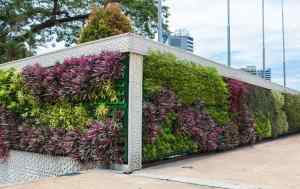 Onwards!
Onwards! But do they work in drier climates? I will just come straight out with it and say I'm not a big fan of them in Perth. Admittedly, some are done very well. There are some large scale commercial walls that are amazing (like the one pictured here which is featured at the refurbished Midland Gate Shopping Centre & installed by Deep Green Landscapes). But behind the scenes, there has been a lot of work in developing high-tech growing systems and a lot of very careful plant selection. Most have automatic moisture sensors that operate computer controlled retic over multiple zones, delivering regular water to only those cells that need it, and several times a day if required. Commercial green walls are regularly maintained and replanted as necessary in order to keep them looking good. Most have interlocking 'tiles' that are planted up, and are easily swapped out from time to time to refresh plantings and allow easier maintenance. They're expensive to install and
But do they work in drier climates? I will just come straight out with it and say I'm not a big fan of them in Perth. Admittedly, some are done very well. There are some large scale commercial walls that are amazing (like the one pictured here which is featured at the refurbished Midland Gate Shopping Centre & installed by Deep Green Landscapes). But behind the scenes, there has been a lot of work in developing high-tech growing systems and a lot of very careful plant selection. Most have automatic moisture sensors that operate computer controlled retic over multiple zones, delivering regular water to only those cells that need it, and several times a day if required. Commercial green walls are regularly maintained and replanted as necessary in order to keep them looking good. Most have interlocking 'tiles' that are planted up, and are easily swapped out from time to time to refresh plantings and allow easier maintenance. They're expensive to install and 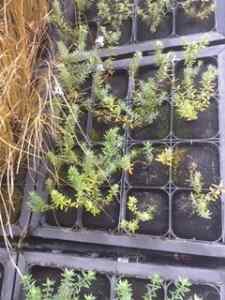 maintain, and specialist firms are usually involved in their upkeep. I wonder how 'green' their ecological footprint really is - but I guess it's a better than a blank concrete wall in terms of habitat, heat islands and aesthetics. The cells used in Midland (pictured right) are planted up using an unusual mix of native plants including Eremophila Glabra Prostrata, Westringia and Lomandra.)
maintain, and specialist firms are usually involved in their upkeep. I wonder how 'green' their ecological footprint really is - but I guess it's a better than a blank concrete wall in terms of habitat, heat islands and aesthetics. The cells used in Midland (pictured right) are planted up using an unusual mix of native plants including Eremophila Glabra Prostrata, Westringia and Lomandra.)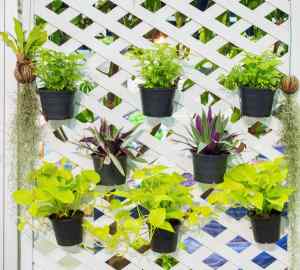 2) Plant selection. This is absolutely key to your success. Have a look at vertical gardens elsewhere. What is similar to your site, or different to your site? What varieties have been chosen? How big will they grow? How long will they last before they need to be replaced with younger plants (if they're going to get too big). What is their growth habit and will it suit a vertical space? How much water do they need? If there's ever a need to consider plant groupings based on water requirements - this is it! Gravity will mean the plants higher up are going to have less water available to them between waterings; while those lower down may end up with wet feet.
2) Plant selection. This is absolutely key to your success. Have a look at vertical gardens elsewhere. What is similar to your site, or different to your site? What varieties have been chosen? How big will they grow? How long will they last before they need to be replaced with younger plants (if they're going to get too big). What is their growth habit and will it suit a vertical space? How much water do they need? If there's ever a need to consider plant groupings based on water requirements - this is it! Gravity will mean the plants higher up are going to have less water available to them between waterings; while those lower down may end up with wet feet. 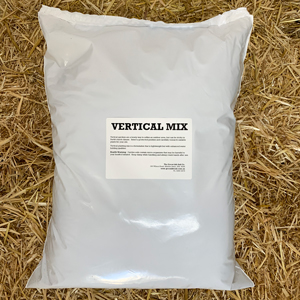 4) Soil and growing media. We always stress the importance of soil to the ultimate health of your plant - and vertical gardens are no exception. Soils need to be lightweight AND retain moisture. Cocopeat, vermiculite and perlite are traditionally used in vertical garden growing media. Also useful is spongolite, silica and Charlie Charcoal - again; lightweight products with the ability to hold on to moisture, and some other special and useful properties. We have all of these available at GLSC. Can't be bothered trying to make a growing medium yourself? We make a ready to use Vertical Garden Mix which we've supplied to a number of commercial installations; and we also bag this in our standard 25L bags if you've only got a small project to work with.
4) Soil and growing media. We always stress the importance of soil to the ultimate health of your plant - and vertical gardens are no exception. Soils need to be lightweight AND retain moisture. Cocopeat, vermiculite and perlite are traditionally used in vertical garden growing media. Also useful is spongolite, silica and Charlie Charcoal - again; lightweight products with the ability to hold on to moisture, and some other special and useful properties. We have all of these available at GLSC. Can't be bothered trying to make a growing medium yourself? We make a ready to use Vertical Garden Mix which we've supplied to a number of commercial installations; and we also bag this in our standard 25L bags if you've only got a small project to work with. Unfortunately many of our traditional vegetables and herbs originate from countries and climates a little less harsh than ours - and there are not too many that thrive under the stressful conditions of exposed sites, reduced area for root growth, and insufficient/irregular water available. So it tends to be tricky to grow herbs and vegies this way. If you want to have a go at food crops in a vertical garden system, pay particular attention to soil quality, available nutrients and moisture. Smaller growing plants (lettuce, strawberries, spinach, chives, garlic chives, spring onion, oregano, thyme, mizuna, tatsoi, radish, chard, small chilli varieties) will be the better ones to try. Consider them annuals and have succession plantings in small pots ready to swap out plants that are struggling, tired or have grown too big if you wish to have your vertical garden in tip-top shape all the time. Liquid feed with fish, worm whiz or kelp regularly to keep nutrition up. Watch for diseases in crowded spots - you want your green wall looking lush but vegies often need good airflow to avoid fungal issues.
Unfortunately many of our traditional vegetables and herbs originate from countries and climates a little less harsh than ours - and there are not too many that thrive under the stressful conditions of exposed sites, reduced area for root growth, and insufficient/irregular water available. So it tends to be tricky to grow herbs and vegies this way. If you want to have a go at food crops in a vertical garden system, pay particular attention to soil quality, available nutrients and moisture. Smaller growing plants (lettuce, strawberries, spinach, chives, garlic chives, spring onion, oregano, thyme, mizuna, tatsoi, radish, chard, small chilli varieties) will be the better ones to try. Consider them annuals and have succession plantings in small pots ready to swap out plants that are struggling, tired or have grown too big if you wish to have your vertical garden in tip-top shape all the time. Liquid feed with fish, worm whiz or kelp regularly to keep nutrition up. Watch for diseases in crowded spots - you want your green wall looking lush but vegies often need good airflow to avoid fungal issues.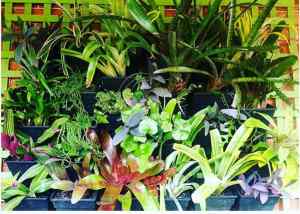 Your choice of plants will depend very much on your site and prevailing conditions. In a shady spot, traditional indoor plants like smaller philodendron species, devils ivy, begonias, old fashioned spider/ribbon plant, liriope and ferns can look spectacular and provide a lush, tropical feel. For hotter areas, you may be better off with succulents like echeveria, sedum, haworthia and sempervivum - there are many cute colours and varieties to choose from. A good nursery will be able to offer you advice - remember the concept of plant groupings. Choose things that have similar watering requirements so they'll work well together.
Your choice of plants will depend very much on your site and prevailing conditions. In a shady spot, traditional indoor plants like smaller philodendron species, devils ivy, begonias, old fashioned spider/ribbon plant, liriope and ferns can look spectacular and provide a lush, tropical feel. For hotter areas, you may be better off with succulents like echeveria, sedum, haworthia and sempervivum - there are many cute colours and varieties to choose from. A good nursery will be able to offer you advice - remember the concept of plant groupings. Choose things that have similar watering requirements so they'll work well together.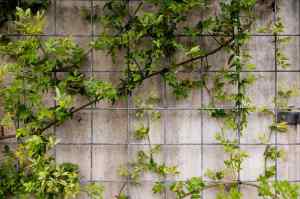 Lastly - if you're keen to have some vertical greenery around your home but you're not sure that a true green wall system will work for you - there are other things to consider. Perhaps a climbing vine on a trellis, or an espaliered tree would work better for you. Given their roots are in the ground (or at least in a pot, on the ground) it is a little easier to provide these plants with more "normal" growing conditions. These plants can be trained to grow upwards, providing coverage for walls and fences, or privacy screening, and often require less maintenance.
Lastly - if you're keen to have some vertical greenery around your home but you're not sure that a true green wall system will work for you - there are other things to consider. Perhaps a climbing vine on a trellis, or an espaliered tree would work better for you. Given their roots are in the ground (or at least in a pot, on the ground) it is a little easier to provide these plants with more "normal" growing conditions. These plants can be trained to grow upwards, providing coverage for walls and fences, or privacy screening, and often require less maintenance. 




















